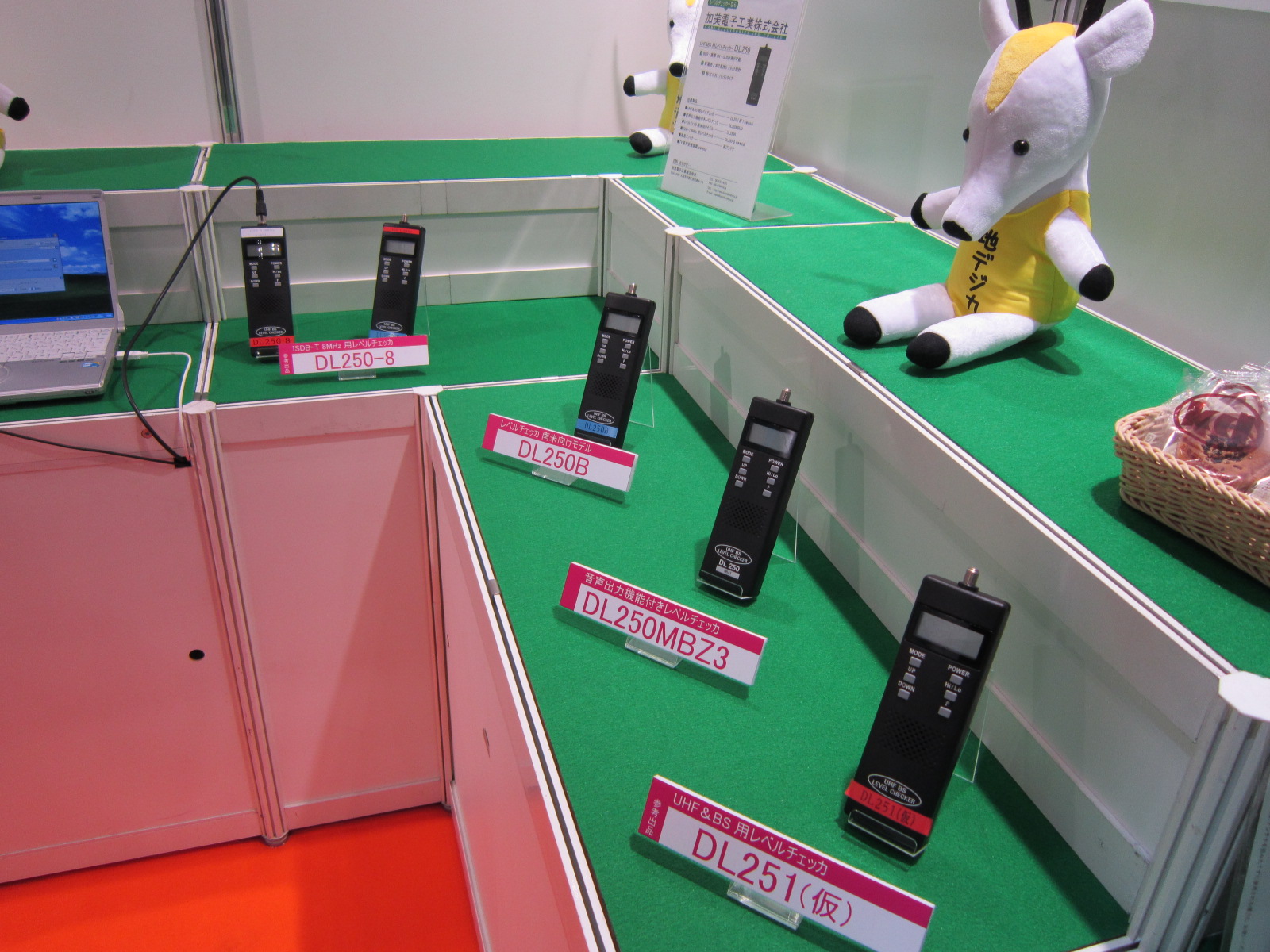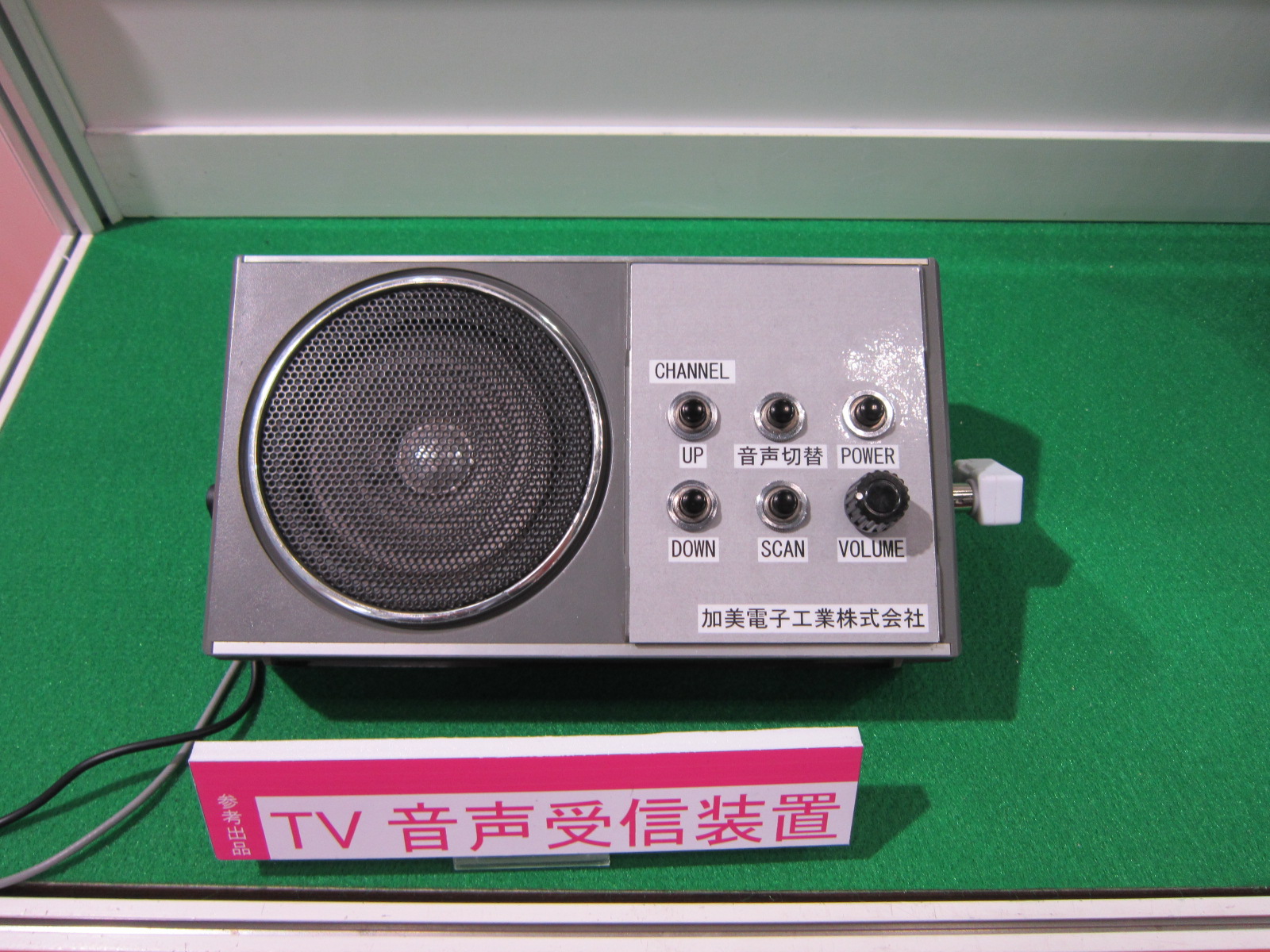Inter BEE 2011:KAMI ELECTRONICS IND. exhibits "DL250", a digital broadcast / BS level checker that enables easy measurement
2011.11.18 UP

KAMI ELECTRONICS IND. exhibited a large number of level checker products aimed at the domestic and overseas markets. The product it is most promoting is its new "DL250" digital broadcast / BS level checker.
■ "DL250" - making BS antenna work more efficient
DL250 is a device to measure the radio field intensity of digital broadcasts (13ch to 62ch) and BS broadcasts (BS1 to 23ch). In addition to level checking, it can measure "BER", "CN conversion " and "GI", which demonstrate the signal quality of a digital broadcast.
With this device, it is possible to get a rough idea of trends relating to GI of multipaths, which previously could only be checked by high-end equipment. It conducts measurements without directly connecting to an antenna, helping to adjust antenna direction. Measurement results can be checked numerically, so even workers not proficient in BS work can use it with ease and it is believed that it will improve work efficiency.
It has pocket-sized dimensions of 183mm (H)*60mm (W)*25mm (L) and it only weighs 240g including batteries (3*AA batteries). It can be used continuously for 24 hours when level checking, and 3.5 hours for UHF digital (BER, CN conversion, and GI).
■Level checkers aimed at the South American and African markets on display
KAMI ELECTRONICS IND. also exhibited at its booth the "DL250B" frequency level checker aimed at the South American and African markets. The DL250B is a level checker for countries that have adopted ISDB-T such as Brazil and Chile. It can also measure BER, CN conversion, and GI.
A number of items exhibited for reference purposes with an eye on commercialization in the future also attracted attention. One such exhibit, the "DL250-8", is an ISDB-T 8MHz band level checker. It is a special model for 8MHz ISDB-T and is being considered for use in Africa. It is a simplified model, and the first with 8 MHz channel bandwidth. In addition to level checking, it can measure BER, CN conversion, and simple GI. It runs on a battery so it can be used securely even in regions with an unstable power situation.
■Device to receive digital broadcasting sound only under development
Another product under consideration for commercialization is a TV audio receiver aimed at visually impaired users. VHF/UHF TV broadcasts could be received via FM radio in the days of analog broadcasting, but with the conversion to digital broadcasting, audio reception is not possible via radio. By using a one-seg receiver it is possible to hear sound, but it is difficult to operate for visually impaired and older people because it must be operated by looking at the screen. Based on the needs of visually impaired users for a TV audio receiver, this product opens the door to digital broadcasting audio reception. It can be operated easily without having to rely on sight, thus supporting access to digital broadcasts by the visually impaired.









